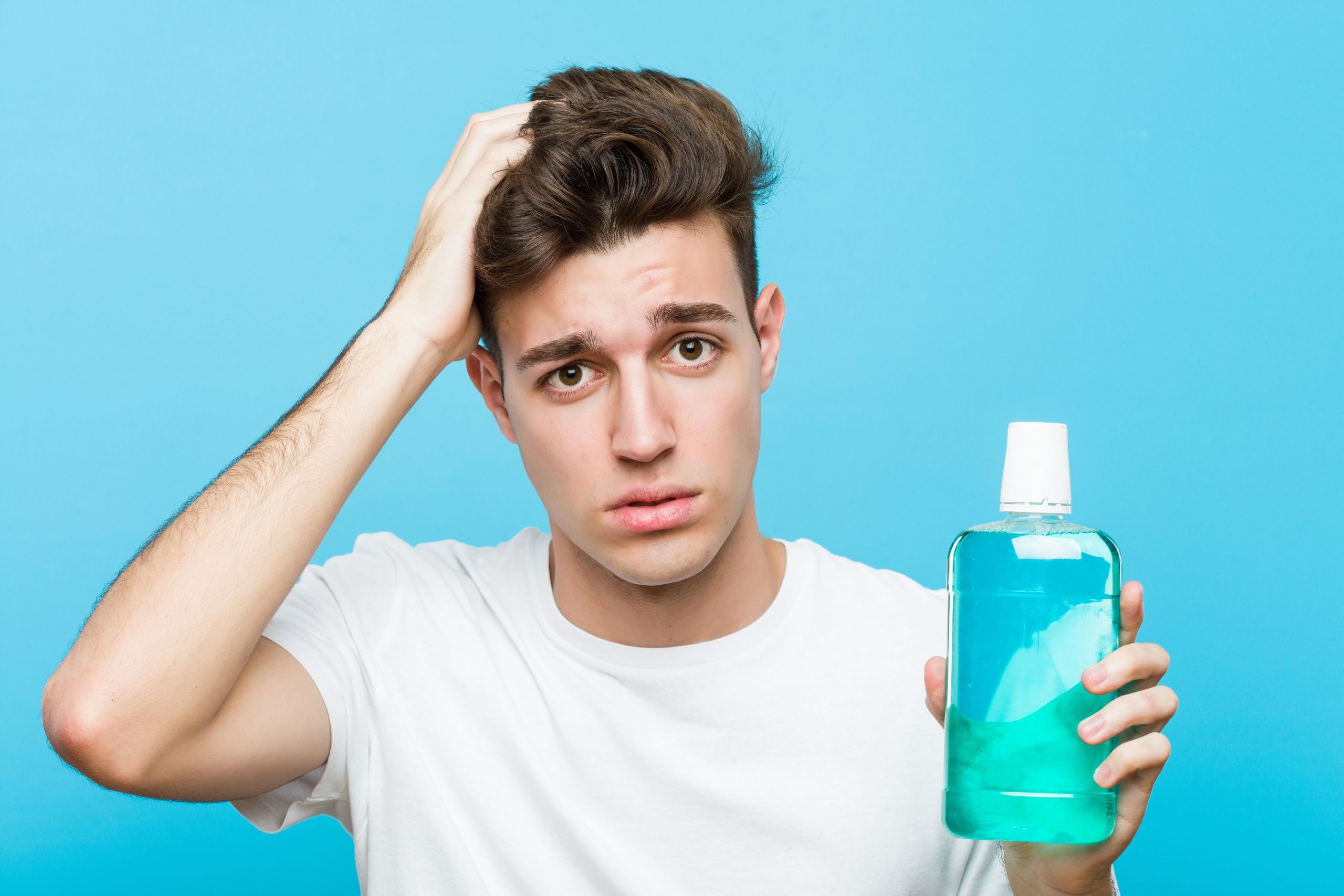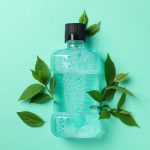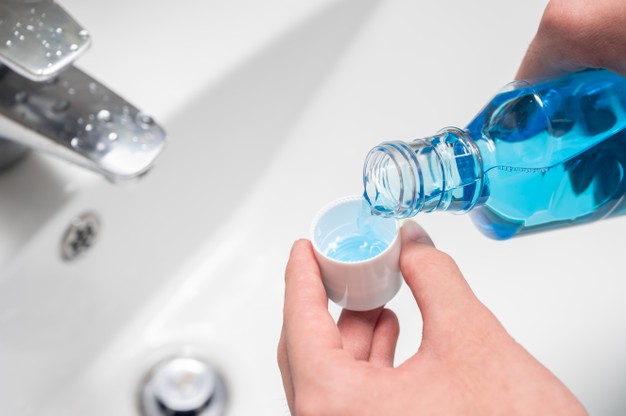

You brush your teeth every day twice a day and even floss regularly. Now you want to make your dentist’s dream come true by adding mouthwash to your oral hygiene regime. But you don’t know which one to pick?
A wide variety of mouthwashes are available in the market from fruity to minty flavors. Apart from the flavors, the presence or absence of alcohol is a very important factor to consider when choosing a mouthwash.

These are mouthwashes which usually contain alcohol in form of ethanol. Ethanol is a strong alcohol and kills bacteria very effectively. But this efficiency of killing bacteria come with a cost in form of side effects like –
Our mouth is covered with both good and bad bacteria. Alcohol kills all of them indiscriminately. This removes the protective bacteria and makes you more prone to cavities in the long run.
The alcohol can irritate your tissues and decrease the production of saliva. Saliva acts as a buffer and protects your teeth from the acid that harmful bacteria produce. This leads to cavities .In the absence of saliva digestion also becomes poor.
Since alcohol is a mild astringent it will cause a tingling sensation when you rinse your mouth. If you have any open wounds like ulcers or small cuts it will sting while using an alcoholic mouthwash.
People like pregnant or lactating mothers, recovering alcoholics and children are advised against using alcoholic mouthwashes. But the fact remains that alcoholic mouthwashes offer the best germ control results.
Here are a few examples of alcoholic mouthwashes –
Listerine is one of the oldest most effective mouth washes in the market. The Listerine original ( orange color) has a strong taste and is not everyone’s cup of tea. Newer flavors like – fresh burst and cool mint are now available. These flavors mask the taste of alcohol well and make rinsing more pleasant. Cool mint-mild taste variant is also available which is milder in taste and doesn’t sting as much as the others.

Non alcoholic mouthwashes contain cetylpyridinium chloride or chlorhexidine gluconate as its main ingredient. These anti bacterial agents target bad bacteria and spare good bacteria. Besides they don’t affect your salivary flow in any way. Some of them even have fluoride added it to increase its anti cavity properties.
Even though non alcoholic mouthwashes are not as effective as their alcoholic counterparts they are better for certain cases in the long run.
Some examples of alcohol free mouthwash
Easily available and the most popular mouthwash. Over 5 variants are available. Fresh tea and peppermint fresh are the most popular flavor with a agreeable minty taste.
Close up brand has recently come up with 2 variants – red hot and nature boost. For a strong flavor go with the red hot flavor and for those who prefer Ayurvedic or herbal flavor go for the nature boost one.

Himalaya brand has 2 variants- HiOra – k and complete care. HiOra – K is for those with sensitive teeth and complete care is for normal use. Both of them have a herbal flavor with Hiora- k being slightly stronger.
Anti cavity fluoride rinse by Colgate – this is usually recommend for patients undergoing braces treatment. It has fluorides which help re- mineralize the enamel. Can also be used by people who are highly prone to cavities.
This is a whitening mouthwash with 2% peroxide. It is to be used cautiously and gives results but takes time.
Talk to your dentist before starting a mouthwash. They will suggest a good mouthwash for you depending on your oral needs.
Remember that mouthwash is just an adjunctive to your oral hygiene routine. You have to continue to brush and floss regularly to get the maximum benefits of your mouth wash.
So Brush, Floss, Rinse and repeat.
Highlights
Dr. Amrita Jain is a practicing dental surgeon since 4 years. She completed her B.D.S in 2016 and was has been a rank holder throughout her course. She suggests “Holistic dentistry is the best dentistry”. Her treatment line follows a conservative pattern which means saving a tooth is of utmost priority and preventing your teeth from getting decayed rather than curing it with a root canal treatment. She inculcates the same while consulting her patients.Apart from her interest in clinical practice, she has developed interest in research and writing over a period of time. She states “It is my clinical experience that motivates me to write and spread dental awareness”.Her articles are well researched with a combination of technical knowledge and clinical experience.
scanO is an AI ecosystem transforming oral health for patients, dentists, corporates, and insurers worldwide

© 2025 Trismus Healthcare Technologies Pvt Ltd